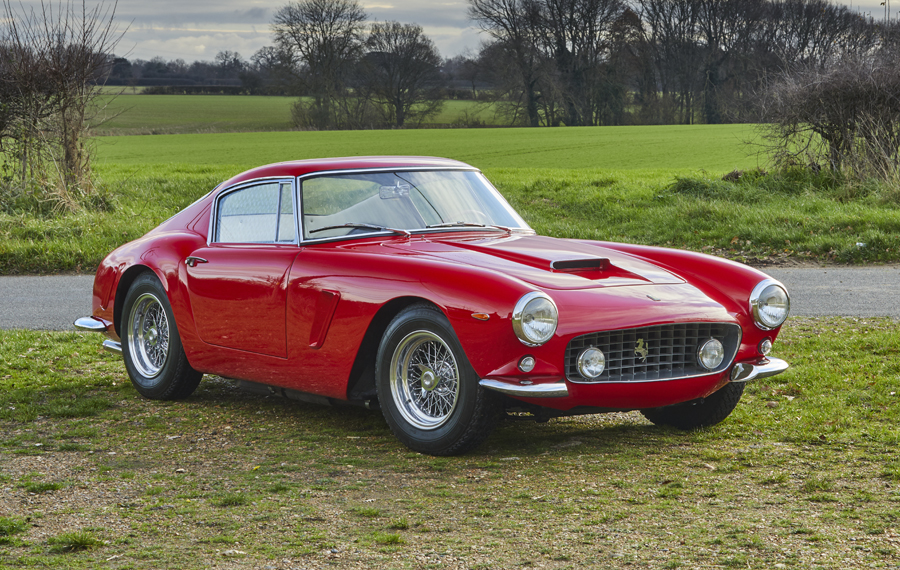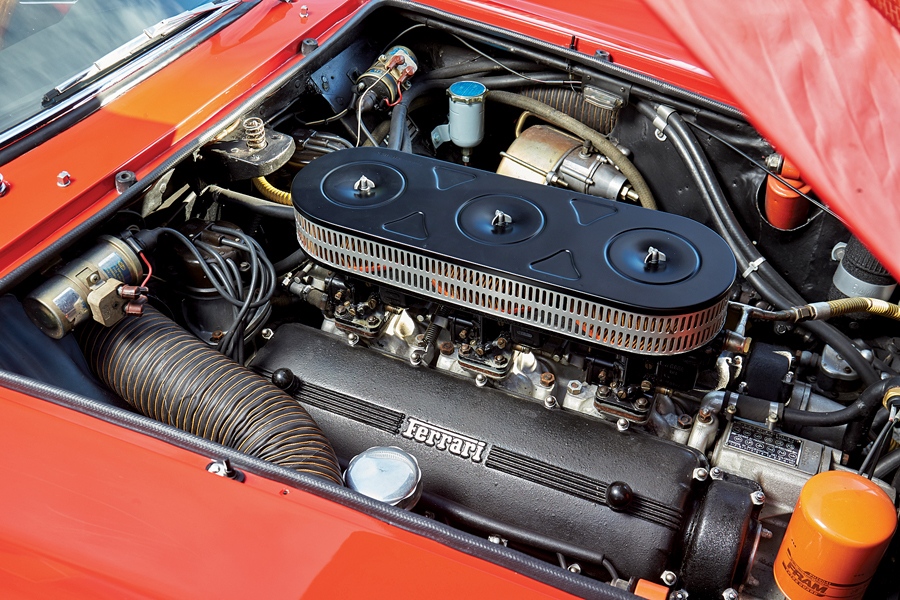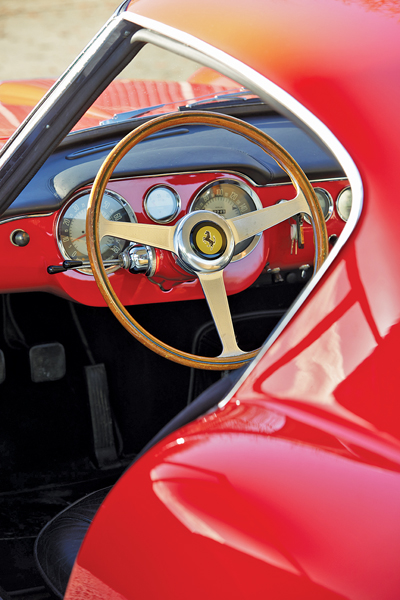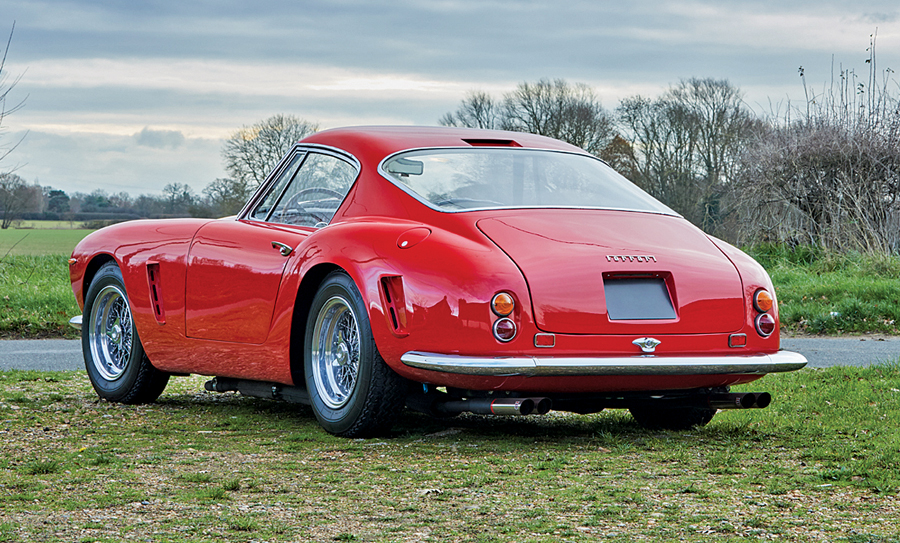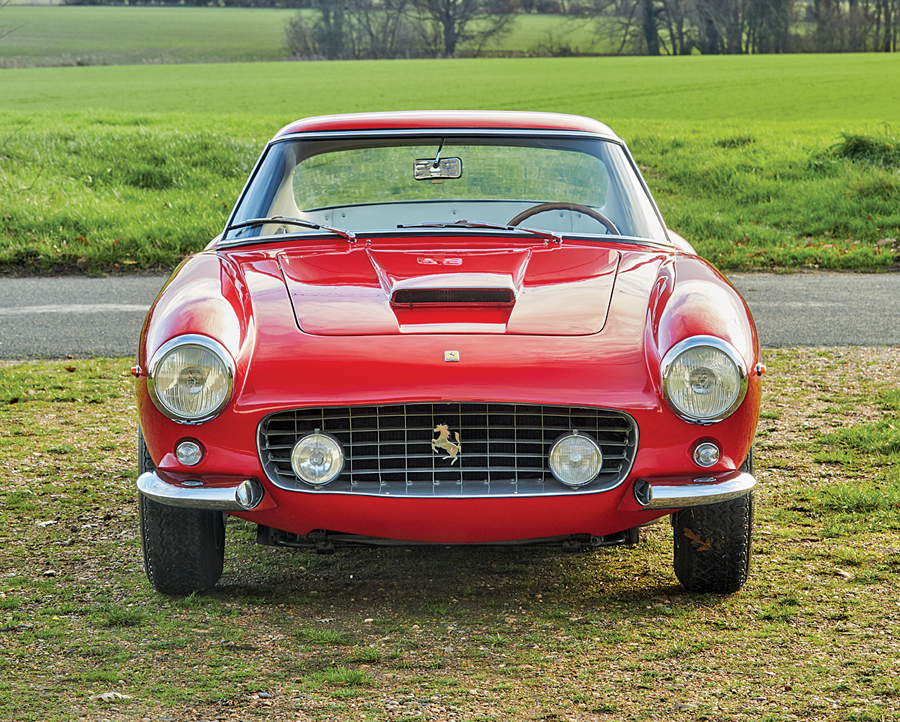SCM Analysis
Detailing
| Vehicle: | 1963 Ferrari 250 GT SWB Berlinetta by Scaglietti |
| Number Produced: | 165 |
| Original List Price: | $14,000 |
| SCM Valuation: | $10,902,500 |
| Tune Up Cost: | $3,500 |
| Distributor Caps: | $400 |
| Chassis Number Location: | Front frame tube |
| Engine Number Location: | Rear engine mount |
| Club Info: | Ferrari Club of America; Ferrari Owners Club, P.O. Box 3671 Granada Hills, CA 91394 USA |
| Website: | http://www.ferrariclubofamerica.org |
| Alternatives: | 1961 Maserati Tipo 61 Birdcage, 1963 Aston Martin DB4GT, 1938 Bugatti Type 57S Atalante coupe, 1955 Jaguar D-type |
| Investment Grade: | A |
This car, Lot 121, sold for $7,595,000, including buyer’s premium at Gooding & Company’s January 19–20 Scottsdale, AZ, auction.
The concours field at the Cavallino Classic is actually two fields.
Directly in front of the historic Breakers Palm Beach Hotel is a small field known as “the front lawn.”
A hedge and sidewalk separate the front lawn from The Breakers golf course. The golf course is for mortal Ferraris. Supercars, modern race cars, young and old sports and GT models — and maybe a vintage Superamerica — are usually shown on the main field.
The front lawn is reserved for Ferrari royalty. That’s where you see Cavallino magazine cover cars, such as 250 GTOs, 250 Testa Rossas, and one-off show cars built for royalty and celebrities.
Learning Ferrari history
Vintage Corvette enthusiasts know about early Corvettes because a friend or neighbor had one when they were growing up. Most vintage Ferrari enthusiasts were not so lucky. Few saw a Ferrari in person until they were well into their adulthood.
It is only through attending car shows and research that most Ferrari enthusiasts learn about vintage Ferraris. Even then, gaining knowledge of vintage Ferraris is devilishly difficult.
My 30-year-old son has been around Ferraris since he was in the womb. Between my work, car shows, and the cars in our driveway, seeing a Ferrari is as normal to him as a plastic surgeon seeing a drooping eyelid.
Like many of his generation, he was aware that some Ferraris, such as 250 GTOs and 250 Tour de Frances, were special, but he had little exposure to the early cars and lacked the historical perspective to appreciate them.
I recently attended the Cavallino Classic with my son, and in a rare break from spending the afternoon helping select the major award winners, I walked the show field with him.
We saw Ferraris from a 166 to very recent models. I got to show him the progression of the marque from the early models to the cars that he was more familiar with than me. With the latter examples, the teacher has become the student.
A 250 SWB caught my son’s eye, and that was my opening for a short lecture on dual-purpose Ferraris.
Racing and daily driving
Serious Grand Tursimo — or Grand Touring — racing can be traced back to 1955, when GT became a class of endurance racing.
The idea was to attract manufacturers and for them to build dual-purpose GT cars for enthusiasts who didn’t want the commitment or expense of a dedicated race car.
Owners purchased a standard production car that could be driven to the race track, raced and driven home. Within the class would be three classes — separated by engine size.
It was a simple plan that turned out to be very successful.
The series was a natural for Ferrari, which needed to sell more cars to finance their Formula One and Sports Racing programs. Their Colombo-designed V12 engine had proven itself powerful and dependable in 166, 195, 212, 225 and 250 MM configurations.
A 250 version was a natural for the over-3,000-cc GT class. Those 250-powered Ferraris would eventually dominate the series.
Within sight of the SWB my son admired was a 250 Europa, a 250 Tour de France and a 250 GTO. The three cars bracket the SWB production, and there was no better time to explain dual-purpose Ferrari progression.
A royal lineage
The 250 Europa was the first Ferrari to compete in the GT class. Only a few were built. While they were competitive, they lacked the development to dominate the field.
The next entry was a 250 GT that is known as a Long Wheelbase and also as a Tour de France, or TdF. Not only was the TdF a dominant competitor, but it also looked the part of a race car.
The 250 SWB came next. The shorter wheelbase improved handling, and its engine, brake and suspension upgrades made it the darling of the series.
The 250 GTO followed the SWB. The 250 GTO had a nearly identical engine, but this magnificent car had so many competition tweaks that it could hardly be considered a dual-purpose model.
Our subject 250 SWB
Chassis 4037GT is a well-known car. Luigi Chinetti sold it new to a New Yorker, and it remained in the Northeast until the late 1970s. It is a steel-body “Lusso” model that was the fourth from the last built.
It was not raced in period, but it has participated in numerous vintage events, including a Tour Auto Rally, where it suffered an unfortunate minor shunt, and the Targa Florio Classic.
A 2018 SCM Platinum Auction Database report noted, “The SWB market helped lead the “get rich quick” Ferrari market earlier this decade when prices nearly tripled from $4m to more than $11m.”
The feverish chase for great Ferraris had too much money chasing too few cars, and the result was unsustainable prices.
A great sale in a softening market
Gooding & Company’s pre-sale estimate was $6 million to $8 million, and the sale nearly reached the top number. Turn back the clock a year or two, and the sale would have been in the $8 million range.
The market is indeed softer, but a $7.6 million sale can hardly be viewed as disappointing. The seller might regret not putting the car on the market a couple of years earlier. The buyer was right to pay up for a great car.
This was a very good result — and it proved that the most-desirable cars are still valuable even in a slump. ♦
(Introductory description courtesy of Gooding & Company.)
